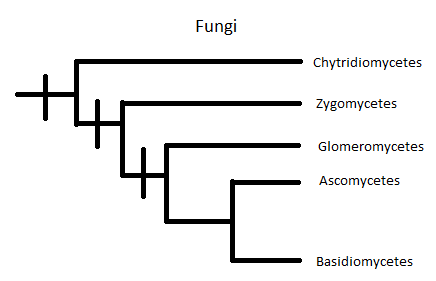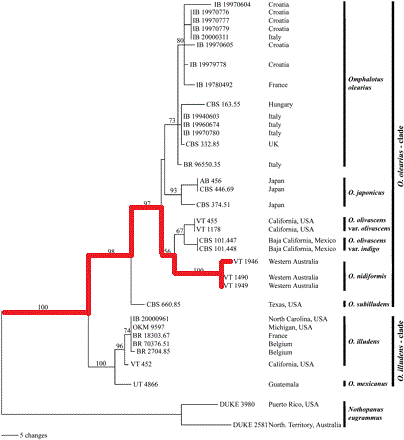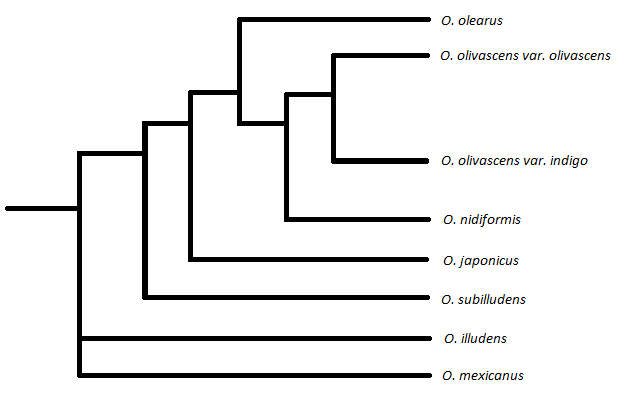
Phylogenetic Tree
 The
phylogenetic tree to the left is the most current classification of
the Kingdom Fungi. The vertical lines all represent synapomorphies.
A synapomorphy is a trait that is shared by two or more taxa and
their most common ancestor. The first vertical line represents the
characteristic of possessing a posterior flagella which a
Chytridiomycete has, and every other fungi lacks. The next vertical
line represents externally-borne sexual zygospores. Each organism
below Zygomycetes lacks a zygospore. The third vertical line
represents endomycorrhizae which breaks down into endo-in, myco-fungus,
and rhizae-root. Glomeromycetes are located in the roots of plants
to help plants capture nutrients such as nitrogen, phosphorus, and
sulfur. What separates Ascomycetes from Basidiomycetes is the
internally-borne sac called an ascus.
The
phylogenetic tree to the left is the most current classification of
the Kingdom Fungi. The vertical lines all represent synapomorphies.
A synapomorphy is a trait that is shared by two or more taxa and
their most common ancestor. The first vertical line represents the
characteristic of possessing a posterior flagella which a
Chytridiomycete has, and every other fungi lacks. The next vertical
line represents externally-borne sexual zygospores. Each organism
below Zygomycetes lacks a zygospore. The third vertical line
represents endomycorrhizae which breaks down into endo-in, myco-fungus,
and rhizae-root. Glomeromycetes are located in the roots of plants
to help plants capture nutrients such as nitrogen, phosphorus, and
sulfur. What separates Ascomycetes from Basidiomycetes is the
internally-borne sac called an ascus.
The phylogenetic tree to the right is a very complex version of
the species Omphalotus. This tree is split into two major clades "O. olearus" and "O. illudens" (Kirchmair
et. al 2004) According to Campbell and Reece et. al, a clade is a
group of species that includes an ancestral species and all its
descendants. (2009) Omphalotus nidiformis, along with
O. olearus, O. japonicus, O. olivascens, and O. subilludens
belong to the "O. olearus clade." The numbers
corresponding to the roots determine the current "bootstrap" or how
similar the two species are based on characteristics. The second
clade, "O. illudens" consists of O. mexicanus and
O. illudens.
tree is split into two major clades "O. olearus" and "O. illudens" (Kirchmair
et. al 2004) According to Campbell and Reece et. al, a clade is a
group of species that includes an ancestral species and all its
descendants. (2009) Omphalotus nidiformis, along with
O. olearus, O. japonicus, O. olivascens, and O. subilludens
belong to the "O. olearus clade." The numbers
corresponding to the roots determine the current "bootstrap" or how
similar the two species are based on characteristics. The second
clade, "O. illudens" consists of O. mexicanus and
O. illudens.
The phylogenetic tree below is a simplified version of the species Omphalotus. This tree is split into two similar clades as the previous tree: "O. olearus clade" and "O. illudens clade."

If you would like to continue learning about Omphalotus
nidiformis, please continue on to the Habitat page.